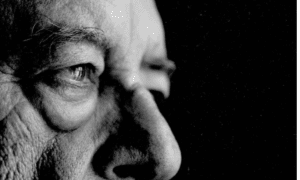Terminal Lucidity: The Mysteries of Dying

Individuals with severe mental or neurological illnesses may experience terminal lucidity, which goes by various names such as rallying, the rally, end-of-life experience, energy surge, the surge, or premortem surge. It’s characterized by an unexpected return of consciousness, mental clarity, or memory just before death.
Patients suffering from advanced neurological or psychiatric diseases may experience terminal lucidity, a sudden resurgence of awareness, clarity of thought, or memory just before passing away. Doctors have been writing about it since the 1800s.
1) Can You Explain Terminal Lucidity?
Someone who has lost all capacity for meaningful activity, including communication, may unexpectedly experience a resurgence of mental clarity or cognition.
People in the latter stages of dementia, when they are unable to converse or carry out daily tasks, are more likely to experience these experiences. On the other hand, terminal lucidity can also manifest in individuals who are terminally ill with other illnesses, like brain damage caused by a stroke or some malignancies.
A terminal lucidity episode typically doesn’t last more than a few days or hours. During these episodes, the affected individual may experience abilities that were previously unavailable to them,
- be able to identify those around them
- communicate with others using complete,
- accurate phrases,
- ask about favorite foods,
- recollect past events,
- identify current locations, and answer questions
- get up and move about, sing,
- and do other things
- Some refer to terminal lucidity as “end-of-life rallying” because of the fact that these events typically occur in the hours or days leading up to a person’s death.
The Question is, What Triggers Terminal Lucidity?


No one knows what neural processes induce terminal lucidity, and experts need a better grasp of the phenomenon.
Much of what professionals now know is based on anecdotal tales; however, more clinical proof is required to comprehend terminal lucidity completely.
People with other illnesses, such as brain tumors, strokes, or schizophrenia, may also experience terminal lucidity.
Evidence from studies reveals that memory and cognition may operate differently during terminal lucidity compared to a normal brain.
Not only is it essential to learn more about the brain’s activity during terminal lucidity so that we can comprehend the phenomenon, but it may also help us better understand dementia. Understanding the underlying neurobiology can benefit research into cures and treatments for neurodegenerative disorders.
Some people experience lucidity while with loved ones, and some find that listening to music helps them become more focused. However, there is often no clear cause for lucid dreams.
A group of researchers has proposed a theory that terminal lucidity could be caused by changes in brain activity just before death.
What this doesn’t accomplish is explaining why people’s abilities that were thought to be lost suddenly start working again.
Dementia may impair a person’s capacity to identify familiar faces, such as acquaintances and relatives.
Additionally, studying paradoxical and terminal clarity is exceptionally challenging. Episodes of lucidity before death do not occur in all cases of severe dementia. Additionally, lucid episodes are unexpected and usually do not have a specific cause.
Furthermore, scientists should not perform their studies during terminal lucidity because it can be a joyful period for those who experience it.
Scientists also have a hard time interviewing caretakers at the time of death to find out if the patient had any conscious moments.
Science does not provide the only explanation for terminal lucidity. In these brief periods of insight, the dying person may be able to communicate with loved ones one more time, say their goodbyes, and find some peace with their impending death.
Some people think that when someone has terminal lucidity, it’s a sign that they’re communicating with the afterlife.
Knowing About Terminal Lucidity is Significant For What Reasons?
Witnessing final lucidity in a person with severe dementia can elicit a range of feelings from those around them.
- Some people may find it calming and bittersweet, while others will find it highly perplexing and disturbing. The desire to change treatment plans and ask for life-prolonging procedures for the dying person is another possibility.
- Suppose loved ones are aware that terminal lucidity is a natural aspect of dying. In that case, they can accept that the person with dementia will not get better, and they can enjoy the time they have with them more fully.
- Witnesses of terminal lucidity may view it as a last, priceless chance to reestablish contact with the individual before dementia seized over and the “long goodbye” started.
While Terminally Ill, How Long Does Clarity Often Persist?


According to recent studies, terminal lucidity can endure for a few hours to a few days.
Studies have shown that individuals with advanced dementia who have terminal lucidity have an increased mortality rate:
- 90% within seven days, 41% within 1-2 days, and 15% within 2 hours. Nevertheless, additional investigation is required for researchers to offer more definitive findings.
- Dementia patients’ loved ones may find terminal lucidity incredibly distressing since it gives them false hope that their loved ones are improving.
- More studies on terminal lucidity might help families take advantage of their loved one’s increased awareness while they’re still here while also coming to terms with the fact that this might be a hint that it’s time to start making funeral arrangements.
- In any case, it’s never easy to get ready for a loved one’s death. Without medical certainty or knowledge of when or how a loved one will die, family members and caregivers sometimes live with an ambiguous and unclear concept that death is imminent.
- The average survival time for an Alzheimer’s patient is 4–8 years, with some cases lasting up to 20 years following diagnosis. Anxiety, despair, and complicated grieving were more common among more than one-third of bereaved caregivers who were unprepared for the loss of a loved one with dementia.
- The ability to recognize terminal lucidity may be a comfort to caregivers and family when they start to prepare for a loved one’s death emotionally.
- According to the data, there seems to be a correlation between these sudden lucid periods and the imminent threat of mortality.
- Each person must go through their unique process of grieving the loss of a loved one. Nonetheless, some measures might assist the grieving in becoming more accepting and enabling them to devote more time and energy to the deceased.
- Being at peace with the impending death of a loved one, arranging the necessary financial, legal, medical, and insurance matters, bidding farewell to the departed, and granting “permission” to die.
Warning Signs
Mood and behavioral changes can sometimes precede memory loss. As the disease progresses, the symptoms worsen. Most dementia patients require assistance with routine tasks.
Initial warning signals include:
- omitting details about current or past events
- not finding what I’m looking for
- having trouble keeping track of time,
- becoming disoriented even in familiar environments,
- becoming lost when walking or driving,
- challenges with problem-solving,
- Decision-making,
- following conversations,
- word-finding,
- carrying out routine duties
- visually estimating the distance to items.
Mood and behavior changes that are common include:
- suffering from memory loss-related anxiety, depression, or rage
- personality shifts, misbehaving,
- isolating oneself from friends and coworkers,
- and showing less empathy for others’ feelings.
- The cognitive abilities of the affected individual before the onset of dementia and other health issues determine how dementia impacts each individual.
- While specific dementia symptoms may worsen with time,
- others may go away entirely or manifest only in the advanced stages of the disease.
- The requirement for assistance with self-care grows in proportion to the severity of the illness.
People behave in ways that are upsetting to themselves and those around them.
- This can include losing the ability to recognize familiar faces,
- having trouble walking,
- losing control of their bladder and bowls,
- having difficulty eating and drinking,
- and even becoming aggressive.
Dementia Common Types


Various diseases and injuries can harm the brain in indirect or direct ways, leading to dementia. The majority of instances (60–70%) may be attributable to Alzheimer’s disease, Lewy bodies are aberrant protein deposits inside nerve cells.
A person may develop dementia following a stroke as a consequence of specific illnesses like HIV, excessive alcohol consumption, chronic traumatic encephalopathy, or dietary inadequacies, among other possible causes. Dementia comes in many forms, and the lines between them are blurry at best.
Care and Treatment
Dementia is incurable, but there are ways to alleviate its symptoms and help those who care for individuals who suffer from it.
- Those living with dementia have options for improving their health and preserving their quality of life, such as:
- Participating in physical activities,
- engaging in social contacts,
- and keeping up with everyday tasks all help keep the brain busy and healthy.
Further, several drugs can alleviate the symptoms of dementia:
- Donepezil is one of several cholinesterase inhibitors used to treat Alzheimer’s disease.
- Memantine and other NMDA receptor antagonists are prescribed to patients with advanced Alzheimer’s disease and vascular dementia.
- Additional brain damage from vascular dementia can be prevented with the help of medications that regulate cholesterol and blood pressure.
- Suppose behavioral and social adjustments do not alleviate severe depressive symptoms in a dementia patient. In that case, the use of selective serotonin reuptake inhibitors (SSRIs) should not be considered first.
- Never use haloperidol or risperidone as a first line of defense against a person with dementia who poses a danger to himself or others.
Taking Care of Oneself
Things that can help with symptom management for those with dementia diagnoses include:
Maintain an active lifestyle.
- Watch what you eat.
- Put down the cigarette and put down the drink.
- See your doctor for checkups regularly.
- To remember everything crucial, write down your daily chores and appointments.
- Do what makes you happy and maintain your passions.
- Seek out novel approaches to mental stimulation.
- Participate in community and social activities and spend time with family, friends, or loved ones.
- Get a head start. Important decisions about your finances or well-being may become more challenging to make as time goes on:
- Find reliable people who can encourage you when you make tough decisions and help you explain your reasoning.
- Make a strategy to communicate your wishes for care and support.
- Be sure to leave your address and contact information on your ID whenever you leave the house.
- If you need assistance, ask loved ones for it.
- Bring up how your friends and family can lend you a hand.
- Be a part of a support group in your area.
Dementia can be detrimental to the caregiver’s health and well-being. Help those you’re caring for who are living with dementia by asking for assistance from loved ones and trained experts. Make time for yourself and take frequent breaks. Try mindfulness-based exercises or other stress management strategies; visit a doctor if that doesn’t work.
What to Look Out For and How to Avoid


Dementia is not an unavoidable result of biological aging, even though age is the most vital recognized risk factor. In addition, young onset dementia. Dementia does not only afflict elderly people.
Physical activity, quitting smoking, limiting alcohol consumption, maintaining a healthy weight, eating well, and keeping blood pressure, cholesterol, and sugar levels in a reasonable range are all factors that lower the risk of cognitive decline and dementia,
Depression, lack of social support, inadequate education, lack of physical activity, and air pollution are other risk factors.
How Often Does a Person Experience Terminal Lucidity?
It is challenging to ascertain the frequency of Terminal Lucidity due to the need for evidence-based data. Researchers would need to achieve the following to carry out formal studies on Terminal Lucidity.
Since it is impossible to anticipate who may experience it: Finding dying people actively engaging in this “rallying” process—which may last anywhere from a few minutes to a few hours—would be a significant challenge for researchers.
Patients’ best interests must be the driving force for the study’s approval by medical ethics committees. To find out what causes terminal lucidity, researchers may need to observe the patient in ways that go against their intentions, which may be to receive only comfort care.
Researchers would need to assess the participant’s mental ability during the rally to determine whether he could provide informed consent. With clarity potentially only lasting for a short time, it’s doubtful that adequate consent would be obtained.
Researchers must also find ways to collect data without draining people emotionally or cutting into their precious free time with loved ones.
Communicating With Someone Who is Terminally Ill
One of the leading authorities on terminal lucidity, Dr. Alexander Batthayany, lends credence to the idea that a dying person may be trying to convey some important message when they “rally” before passing away.
- Those in the throes of terminal lucidity frequently find themselves abruptly awake and engaging with their surroundings. Despite spending months in bed, they may still desire to get up and move about.
- Anyone can ask for a particular dish or cuisine. The individual may want to see a family member to make amends or pay a final visit. The individual may have a strong desire to ensure the completion of seemingly little tasks.
- Terminal lucidity is something I have witnessed firsthand, both with loved ones and with patients. Last year, I went home to change clothes and take a shower after leaving my father’s side in the hospice. My dad had been dozing off, unresponsive to repositioning attempts, and parched for days.
- Upon my return, my father jerked his eyes wide and signaled me to approach. His question was, “Is this it?” “Tell me, is this it?” he asked anxiously before I could respond. The flare of his gray eyes transported me to my boyhood when telling the truth was expected of you.
- I broke the news to my dying father through my tears. Despite his severe hearing loss, he nodded in response to my question about if he could hear me. He gently squeezed my hand as I clutched his formerly muscular and laborious hands. Just before Dad went to sleep and died the following morning, we got the chance to say “I love you” one more time.
I will always be grateful for what I gained from my little experience with Terminal Lucidity.
Common Medical Myths That Many People Still Hold Even When Evidence Disproves Them
What Loved Ones Can Do to Help a Family Member Who is Terminally Ill.


Supporting a loved one through Terminal Lucidity is possible through the actions of family members. Among these items are:
- Inform the hospice or palliative care staff that your family member is “rallying.” Make sure to mention that your loved one has specific requests, such as eating certain meals, talking to certain family members, or sitting up;
- Keep in mind that you are being given a gift of energy and clarity and that it will not remain forever;
- Your loved one may need their food or drink thickened or pureed to avoid choking, so you should do what they ask;
- Get your loved one in touch with the person he wants to talk to to make amends if he asked you to;
- You should encourage your loved one to make funeral arrangements and a will while he is mentally competent.
- Set up a meeting with his financial or legal counselor for him right away;
- Your loved one may reject pain medicine if they want to remain vigilant.
- To find a happy medium between mental clarity and sufficient pain relief, talk to the hospice or palliative care staff about pain management.
- Observe your loved one for any indications of discomfort, such as a change in facial expression, the protection of a specific area of the body, shallow breathing, perspiration, groaning, or claims of pain;
- Please keep in mind that your loved one is still not well. He needs supervision to ensure his safety during physical activities because of his weakness;
- Observe for indications of fatigue and encourage breaks.
- Hospice and palliative care providers teach patients about dying and its symptoms. Still, they don’t cover much ground when planning a meaningful “end-of-life rally.”
- To make the most of this last gift of clarity, a Death Doula can guide you and your loved one through this final chapter of life with their expertise in end-of-life care.
In Light of This, What Does the Future Hold for Alzheimer’s Disease Research?
Instead of “Terminal Lucidity,” some researchers use “Paradoxical Lucidity” to describe these fleeting states of enhanced awareness and vitality.
“Paradoxical Lucidity in Late-Stage Dementia” was the subject of a 2019 workshop hosted by the National Institute on Aging (NIA).
Though they may not be nearing the end of their lives when they experience mental clarity, people in this study may have severe neurodegenerative disorders like Alzheimer’s.
“Lucidity in Dementia” studies aim to understand how the brain temporarily regains function.
The family can assist the dying person in making the most of their terminal lucidity phase if it occurs throughout their illness.
A dignified death is possible when pain is managed without overmedication when getting out of bed is done safely, when food and fluids are requested, and when requests to communicate with specific persons or accomplish unfinished activities are accommodated.
When you’re feeling the worst sense of loss, the memories you make during this last window of lucidity could be a comfort.
2) A Scientific Investigation into Paradoxical Lucidity


Paradoxical lucidity is a well-documented symptom seen by many individuals with severe dementia. However, its exact cause is still a mystery.
Dementia is a degenerative disorder that impacts a person’s cognitive abilities, including their thinking, memory, language, and more. People are living with dementia around the world. The onset of dementia is associated with an increased risk of disability and mortality, ranking it ninth globally.
Dementia deteriorates into its later stages when a person can no longer communicate with others or participate in meaningful activities.
However, paradoxical lucidity, a sudden flash of clarity, may also occur as individuals with this illness approach the end of their lives.
An explanation of paradoxical lucidity follows, including its symptoms, frequency of occurrence, and resources for those caring for a loved one toward the end of life.
Can You Explain Paradoxical Lucidity?
People who have lost the ability to communicate meaningfully with others may have brief periods of mental clarity.
This level of clarity is commonly associated with persons suffering from advanced dementia who are unable to recognize or interact with others.
It is also possible for people with different diseases who are nearing the end of their lives and have lost the capacity to communicate to experience this.
When paradoxical clarity strikes, what does one really experience? A person who has remained quiet up to this point may exhibit unexpected behavior such as:
- engage in dialogue, answer inquiries
- talking about things that have happened to them in the past,
- recalling specifics about themselves,
- identifying loved ones,
- getting up and moving about or engaging in other activities
Although there is a need for more Research on paradoxical clarity, the phenomenon was investigated in a 2019 study published in 2023. Physicians, nurses, PTs, and others from the medical field were among the 33 participants in this study’s interviews regarding their experiences with paradoxical lucidity.
Complete lucidity and unimpaired communication were restored in over half of the recorded cases. There was lucidity in 31% of incidents, albeit the patient’s disease meant they could only do so much. Even after clarity improved, substantial impairment persisted in nearly 21% of individuals.
The intriguing element is that all of the cases documented by healthcare professionals involved the ability to speak and communicate. In addition, the subject exhibited atypical behavior, such as playing an instrument, in 22 cases.
Do Paradoxical Lucidity and Terminal Lucidity Differ in Any Way?


Paradoxical land terminal lucidity refers to periods of mental clarity in a person who is usually unable to communicate. However, experiences of lucidity just before death are also known as terminal lucidity.
Similar to paradoxical lucidity, individuals experiencing terminal lucidity report a rapid return to cognitive abilities like speech, memory, and even singing. Death often occurs in the hours or days following the episode, and the following clarity is brief.
Paradoxical Lucidity: How Prevalent Is It?
Academics find it challenging to pinpoint the exact frequency of paradoxical clarity due to the need for extensive Research on this phenomenon. A few studies, however, have provided us with a ballpark figure for its potential prevalence.
Over 61% of prospective participants in a 2022 study on carers and episodes of lucidity reported having seen paradoxical lucidity in a person with dementia. The total number of episodes that these study participants claimed to have seen was 479.
In addition, as stated earlier, 73% of the healthcare personnel surveyed in the 2019 study had seen patients experience paradoxical lucidity once or more.
Paradoxical Clarity: What Makes it Happen?
Case studies and anecdotal accounts have proven that paradoxical lucidity does occur, even though comprehensive Research on the subject still needs to be included. However, the exact origins of these episodes still need to be discovered due to the need for more data regarding what occurs in the brain during them.
To learn more about the phenomena and their causes, numerous specialists in the area are persistently investigating the facts we have so far.
Curious to Find Out More?
Dementia sufferers, whether you or a loved one, may provide insights that can help us better understand paradoxical clarity and the disease. You can consult your doctor about participating in a clinical trial.
At What Point Does Paradoxical Clarity Typically End?
Given paradoxical lucidity’s seeming randomness, it is impossible to predict when or for how long it will occur. Some witnesses have described days-long events, while others have described brief flashes of clarity from those closest to them.
A third of the episodes described by healthcare providers in the 2023 study lasted multiple days; nearly a quarter lasted one day, and around a quarter lasted thirty minutes to an hour.
It could be beneficial to make preparations for your loved one’s actions if they experience paradoxical lucidity if they are suffering from advanced dementia.
Before they pass away, it’s crucial to gather important information, such as emergency contact information for faraway family or issues regarding burial arrangements or their will.
Providing For Your Family and Yourself
Family, friends, and caregivers can all experience the emotional and mental toll of witnessing a loved one’s decline as they face the final stages of a disease like dementia. Additionally, it can be emotionally taxing to witness a loved one have a sudden clarity episode—
There is assistance available if a loved one with dementia is nearing the end of life. Consider checking out these resources if you are seeking end-of-life professionals, caregiver support groups, or mental health support:
3) How Does Subcortical Dementia Occur?


Competing with dementia affecting the brain’s cortex
Dimensions that impact the subcortical regions of the brain are rather deep-seated. Subcortical dementias,
- which include symptoms including altered personality,
- memory loss,
- and slowed thinking,
are commonly caused by disorders like Huntington’s and Parkinson’s.
- Memory loss,
- cognitive impairment,
- reasoning problems,
- and impaired ability to care for oneself are all symptoms of dementia.
It happens when neurons, the building blocks of your brain, stop working correctly and begin to die off. Dementia symptoms differ according to the regions of the brain impacted.
Subcortical dementias impact brain regions deep within the skull, including the thalamus and basal ganglia. These areas process sensory information, motivate actions, and regulate emotions.
Subcortical dementia is a symptom of several neurological disorders, including Parkinson’s disease.
When Compared to Cortical Dementia, How is Subcortical Dementia Different?
Dimensions affecting the subcortical structures beneath the cerebral cortex are known as subcortical dementia. You can find structures like gray and white matter in this brain area.
As an analogy, think of your brain as an avocado: the green part is the cortex, and the pit is the subcortical region.
The four hemispheres of your brain—the frontal, temporal, parietal, and occipital—make up your cerebral cortex. When you have cortical dementia like Alzheimer’s disease (AD) or frontotemporal dementia (FTD), it will impact not only your frontal lobe but also other parts of your brain.
However, cortical dementias can also affect subcortical regions, and distinguishing between the two types can be challenging due to the similar symptoms they induce.
According to a 2018 study, amyloid plaques eventually impact the subcortical amygdala, putamen, and caudate nucleus, a characteristic of Alzheimer’s disease. Additional cognitive deterioration has been associated with this development.
Deep Within the Brain
Several structures in the subcortical area of your brain perform different tasks. One example is the:
the corpus callosum, amygdala, cerebellum, and globus pallidus
the thalamus, the subthalamic nucleus, the substantia nigra, and the putamen
How Can Subcortical Dementia Manifest Itself?


Dementia affecting subcortical regions can manifest in various ways. However, your underlying disease and the specific brain areas impacted will determine the symptoms,
Subcortical dementia is characterized by several symptoms, including:
- issues with mood or character, lethargy, and sadness
- challenges related to the management of memory issues and forgetfulness
- speech that is quiet,
- slurred,
- or otherwise impaired mental processing
Common symptoms of movement disorders in the subcortical region include:
- problems with movement,
- stiffness in the muscles,
- tremors
Various forms of subcortical dementia exist; what are they?
The following disorders are frequently associated with subcortical dementia:
- neurodegenerative illness
- Alzheimer’s disease
- Vascular dementia
- Dementia (Lewy body)
- diseases such as syphilis, MS, and multiple system atrophy
- elevated spinal cord palsy
- Dementia caused by HIV
Subcortical Dementia: What Causes It?
It is common for individuals suffering from subcortical dementia to have a combination of the disorders mentioned before. However, the exact process that causes dementia varies slightly throughout the various diseases.
For instance, in vascular dementia, the amygdala and other subcortical regions have trouble getting blood because small blood veins in the brain harden.
Dementia symptoms and atrophy can result from little strokes that spread across the subcortical region.
Subcortical regions, including your substantia nigra, get infested with vast clumps of alpha-synuclein, which is known as a Lewy body, in Parkinson’s disease.
Neurons become dysfunctional or die off completely when Lewy bodies are in the brain.
Risks to Children’s “Sensory Processing” From Excessive Screen Time
In What Ways Might Subcortical Dementia Manifest?
The onset of dementia might be influenced by your age, genes, and gender. As per an article, additional variables linked to increased risk in this study are:
- mental illness
- damage to the brain, diabetes,
- loss of hearing
- excessive alcohol intake
- hypertension, a lack of knowledge, and excess body fat
- not moving around
- much smoking
- lack of interaction with others
- If you already have another neurodegenerative disease, your risk of developing subcortical dementia may be higher.
For instance, Research conducted in 2022 found that over 26% of individuals diagnosed with Parkinson’s disease also experience dementia.
Who Makes the Diagnosis of Subcortical Dementia?
Simply having subcortical dementia does not constitute a diagnosis. A specific area of the brain can be affected by this kind of dementia, which is a generic word.
A doctor or healthcare provider needs to perform a brain scan to diagnose subcortical dementia. Some brain scans are used to test dementia as MRI, and CTScan.
The goal of a doctor’s diagnosis in the event of dementia symptoms is to determine the underlying reason. Steps in the diagnostic procedure will comprise:
a checkup, a look at your health records, and some inquiries regarding your symptoms, either from you or a loved one
Cognitive evaluations and laboratory tests are other typical methods for diagnosing dementia.
How Does Subcortical Dementia Treatment Work?
The etiology of subcortical dementia dictates the course of treatment.
Suppose a patient has subcortical vascular dementia, for instance. In that case, their doctor may recommend therapies to increase blood flow to the afflicted brain regions.
Medicines for hypertension or adjustments to one’s way of life could fall under this category.
Although there is currently no cure for subcortical dementia, medications can typically slow the disease’s course.
If you are having any kind of dementia symptoms, it is crucial to get treatment promptly.
How Long Does it Typically Take for Someone to Recover from Subcortical Dementia?
Your life expectancy may be affected by a multitude of circumstances if you have subcortical dementia. Among these factors include your age, general health, and the nature of the underlying disease.
The typical life expectancy for an individual with vascular dementia is approximately three to five years from the onset of symptoms.
A 2017 study found that compared to individuals with Parkinson’s disease alone, those with dementia and Parkinson’s disease had a 2.5-year shorter life expectancy.
4) Multi-Infarct Dementia: What Is It?


Many ministrokes can cause multi-infarct dementia, the second most prevalent form of dementia in those 60 and up.
Progressive memory loss following a stroke is known as vascular dementia, and one form of this condition is multi-infarct dementia (MID).
“The blood supply to the brain interruption” causes tissue death, a condition known as an infarct. Damage to brain cells from several little strokes can lead to MID.
There is currently no treatment or cure for MID. However, a healthy lifestyle and medicine might lessen the likelihood of strokes. If you have a stroke, your symptoms may improve at first, but later they deteriorate.
Living with Chronic Pain: Strategies for Coping and Finding Relief
When Does Multi-Infarct Dementia Occur?
Dementia in the elderly is most often caused by MID, second only in incidence to Alzheimer’s disease. People between 60 and 75 are at increased risk for developing it. Only a little more males than women are impacted by MID.
- The most prevalent form of vascular dementia, MID, can develop after a series of ministrokes, commonly known as transient ischemic episodes.
- A clogged or burst artery causes blood to stop flowing to parts of the brain during a stroke.
- Rapid cell and tissue death in the brain can occur due to a shortage of oxygen and nutrients.
- Hypertension, or high blood pressure, lowers blood vessel strength and increases the likelihood of having myocardial infarction (MID).
- Because of this, arterial ruptures and blood clots are more likely to occur.
Factors
- Cardiac problems,
- high blood sugar,
- high cholesterol,
- smoking
Can you tell me the signs of dementia caused by several infarcts?
It is possible for the ministrokes that typically lead to MID to be symptomless.
- A ministroke might be brief (less than an hour) or long (more than an hour).
- Ministrokes and strokes can manifest with visible signs such as:
- sagging or paralysis impacting a single facial region,
- impaired verbal expression,
- weakness, or numbness of a limb,
- particularly affecting just one side of the body
A person may experience a rapid onset of MID symptoms. Some possible symptoms are:
bewilderment, trouble focusing, forgetting recent events, becoming disoriented even in familiar environments
trembling and moving at a rapid pace, uncontrollably laughing or sobbing
problems in following directions or keeping track of finances; incontinence of the bladder or bowels
If you have more ministrokes, your symptoms may ease and return.
What Symptoms Signify Multi-Infarct Dementia to Doctors?
- During an appointment, your doctor will want to know your current prescription list, dietary habits, and medical history.
- a lack of strength or sensation in your lower extremities
- challenges with hearing, seeing, walking, or balancing
To Diagnose
- electroencephalogram (EEG) to identify abnormalities in brain waves,
- blood tests (including thyroid function testing),
- and readings of blood pressure
- X-rays, (MRI),
- (CT) scans of the brain,
- cognitive tests to evaluate your language skills, logic, memory, and other mental capacities
How Does Multi-Infarct Dementia Treatment Work?
Treatment for MID may reduce the risk of further ministrokes, but there is no cure.
When the carotid arteries—the primary blood vessels to the brain—become clogged, a surgical procedure called a carotid endarterectomy may be necessary to clear the way.
Ministrokes can be treated with medicine from a doctor.
Some of these treatments include:
- Insulin, biguanides, alpha-glucosidase inhibitions, beta-blockers, and diuretics can treat diabetes, high blood pressure, and other conditions.
- ACE inhibitors, beta-blockers, statins, and nonstatins for high cholesterol, cardiovascular disease, and other conditions
People With Multi-Infarct Dementia Typically Have a Lifespan of…
Patients with vascular dementia, including MID, have a life expectancy of approximately 5 years on average.
Due to the higher risk of death from cardiovascular disease or stroke associated with MID compared to dementia-related comorbidities, this is lower than the 8 to 10-year life expectancy associated with Alzheimer’s disease.
Is it Possible to Avoid Chronic Ischemic Brain Damage?
A healthy lifestyle may reduce dementia and strokes, which can cause MID. Still, it doesn’t change other risk factors, like age and heredity.
Among these are:
- controlling your BP, BG, and cholesterol levels
- eating less salt, cholesterol, saturated fat, and trans fat
- participating in mentally challenging pursuits such as hobbies or games regularly
- obtaining a sufficient amount of sleep, keeping a healthy weight
- refraining from nicotine
- abstaining from heavy alcohol consumption
- handling tension
- maintaining a social life
What Distinguishes Alzheimer’s Disease from Multi-Infarct Dementia?
While both MID and Alzheimer’s disease are prevalent forms of dementia, they are distinct diseases:
- When specific proteins accumulate and start to kill off brain cells, it’s known as Alzheimer’s disease.
- Multiple ischemic strokes (MIDS) are a form of vascular dementia.
- In most cases, the onset of Alzheimer’s symptoms is gradual and steady. Symptoms of MID can develop rapidly.
- MID and Alzheimer’s can coexist.
Greetings! Your voice is valuable to me. Please feel free to share your thoughts, feedback, recommendations, or requests for future content. Your contributions are welcomed and appreciated. Rest assured that your input will remain confidential and free of charge. Please subscribe, like, and share. Thanks, and have a nice day




